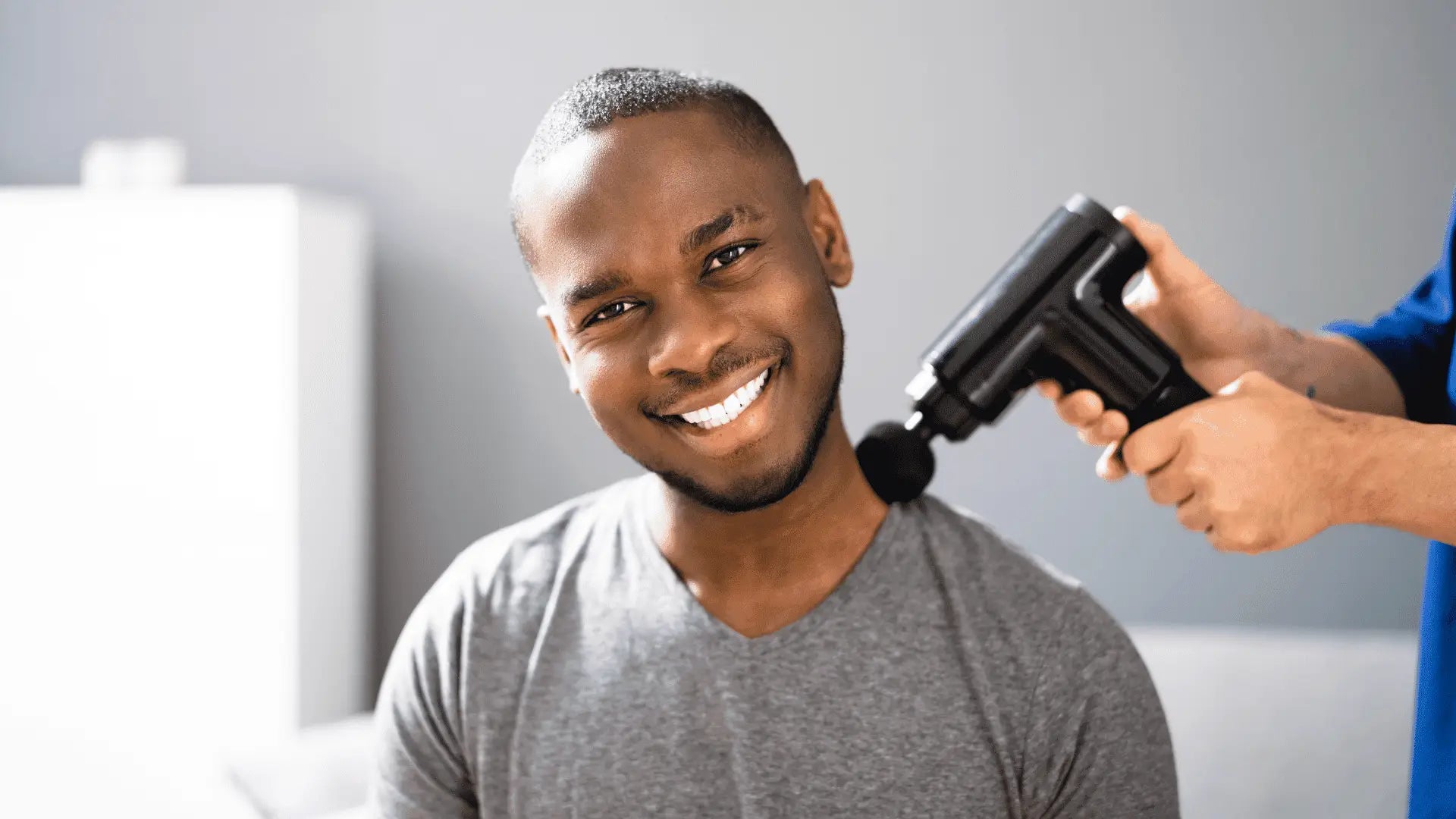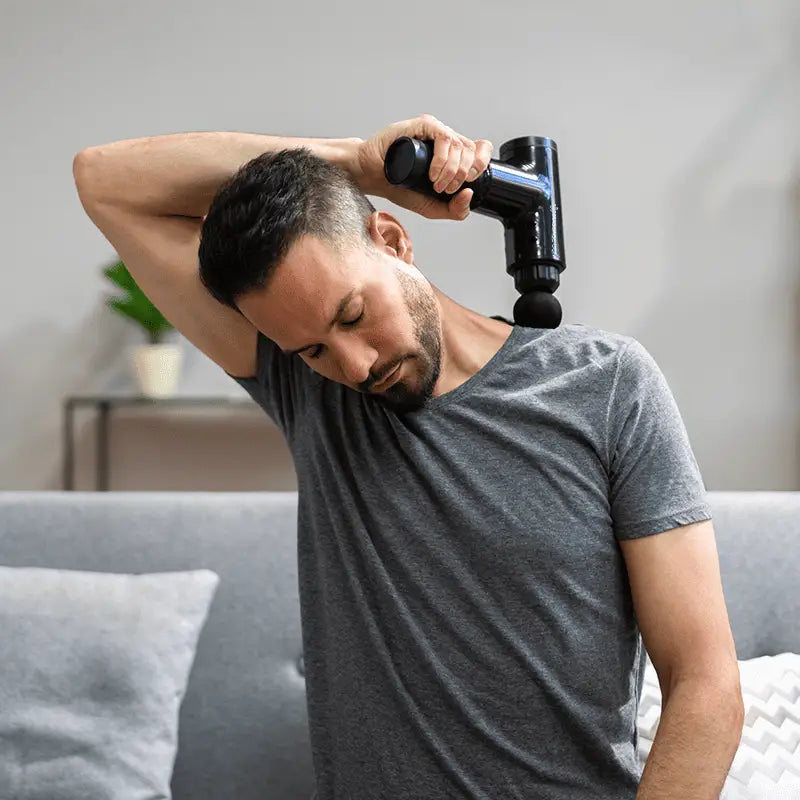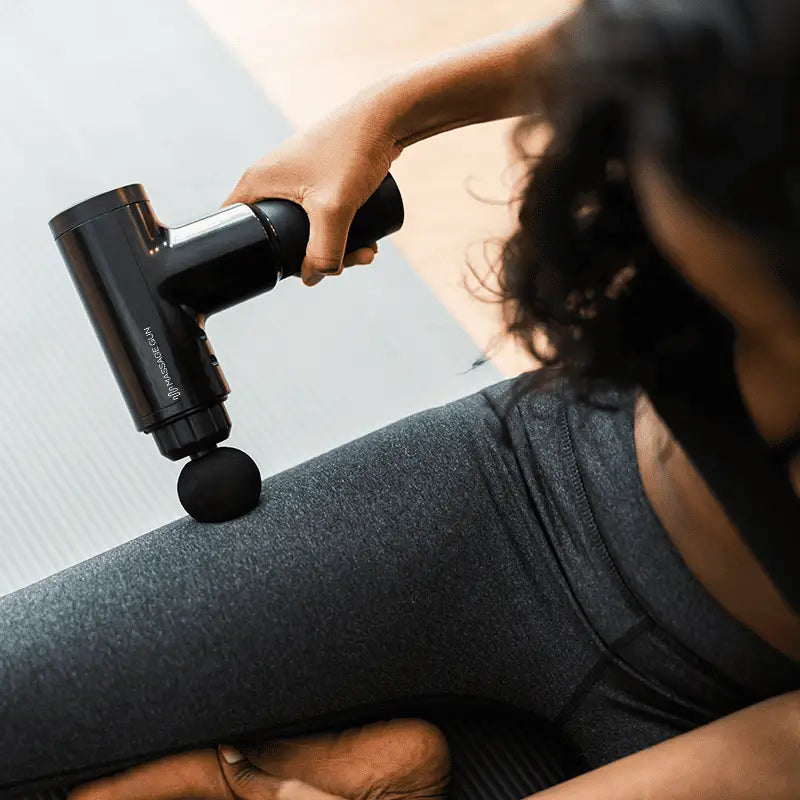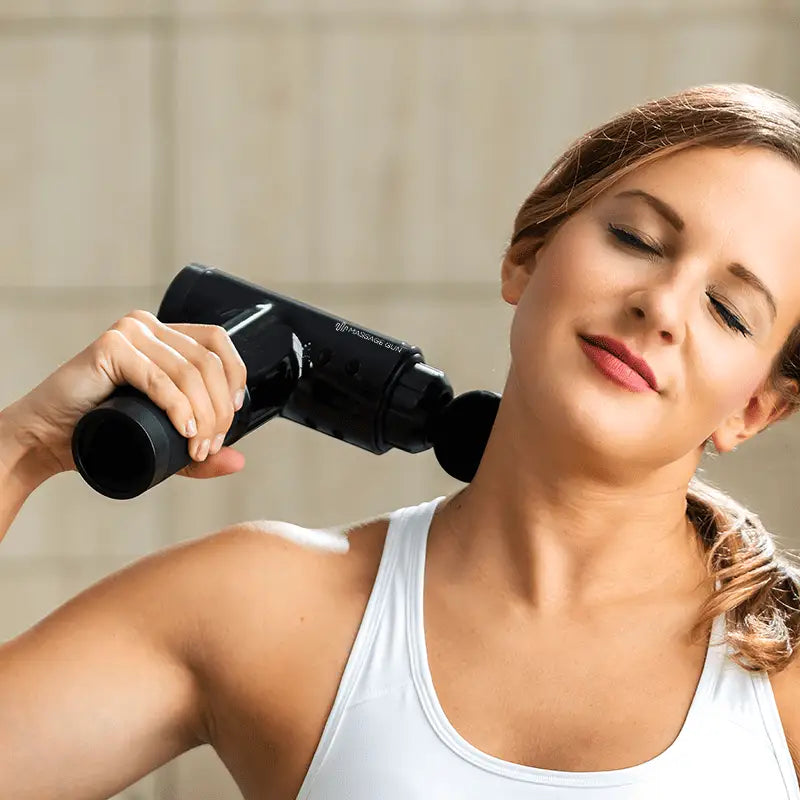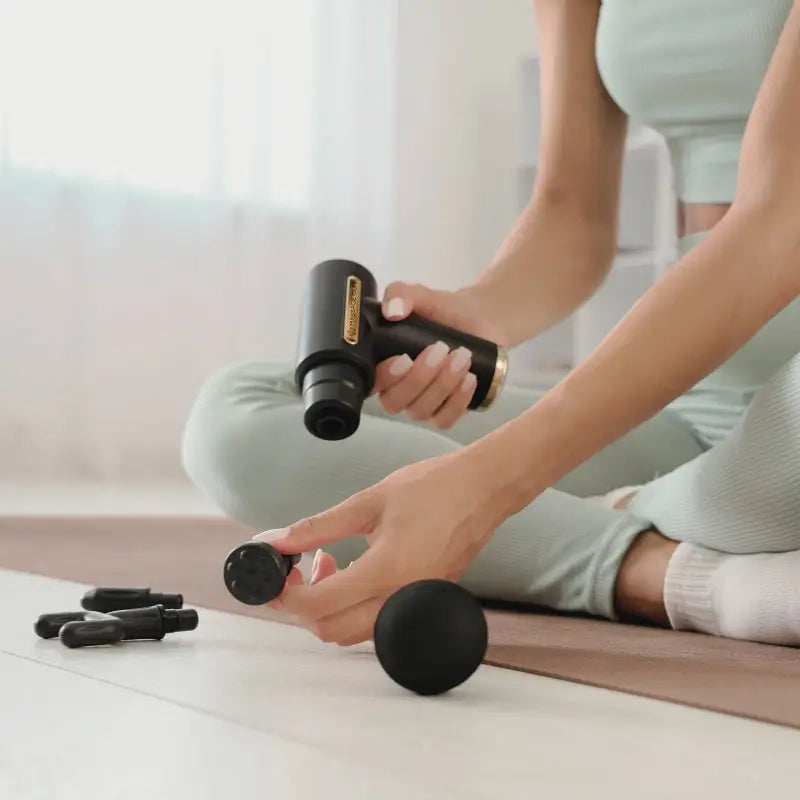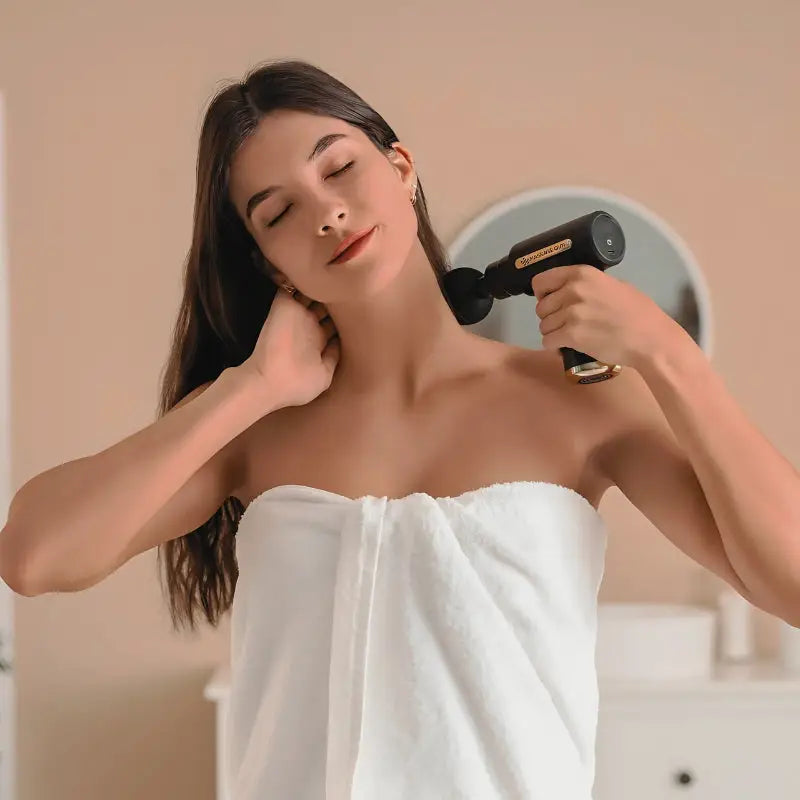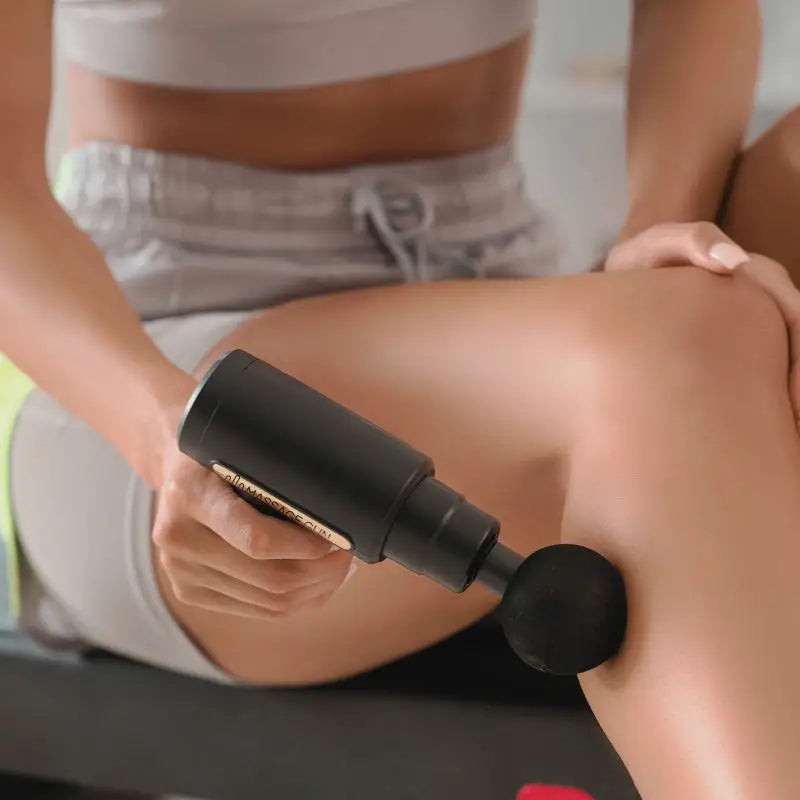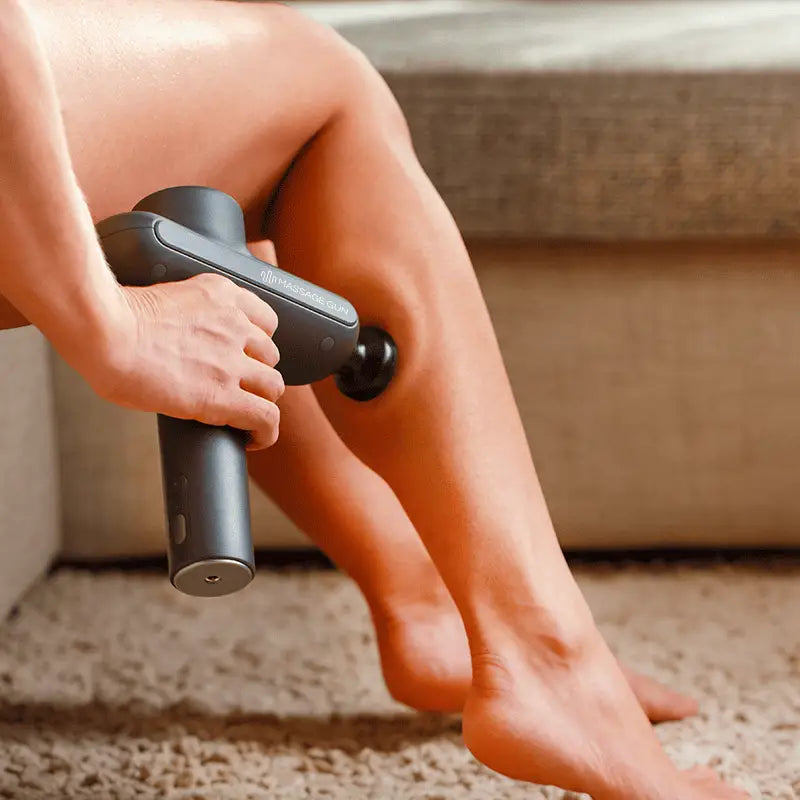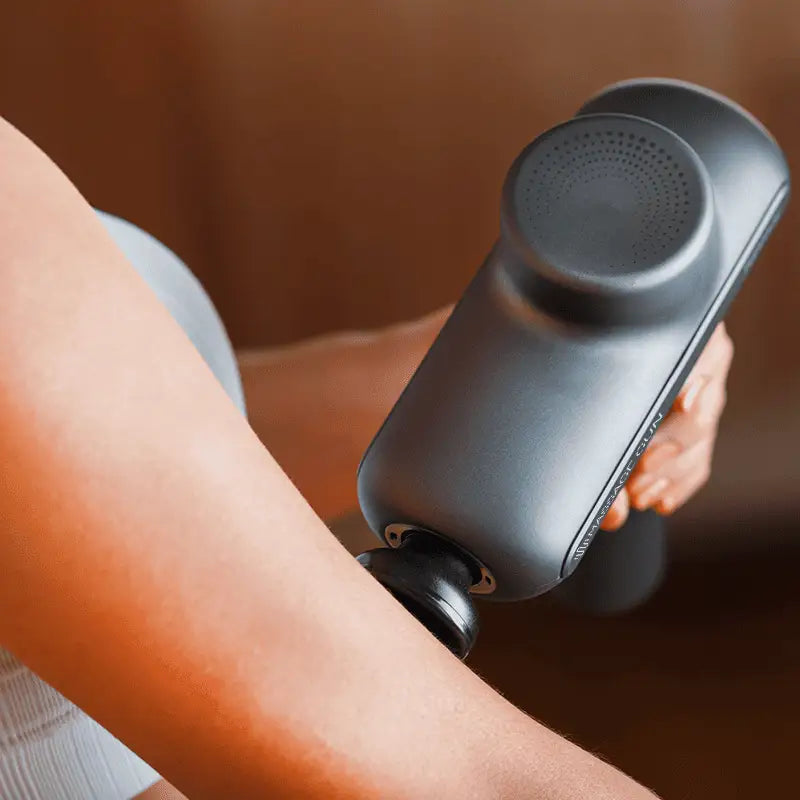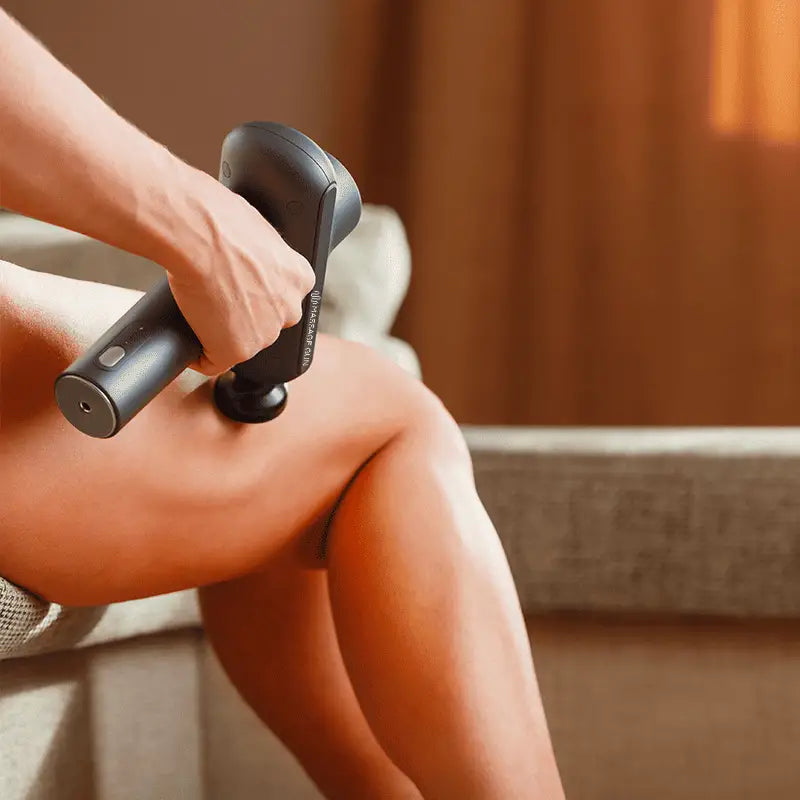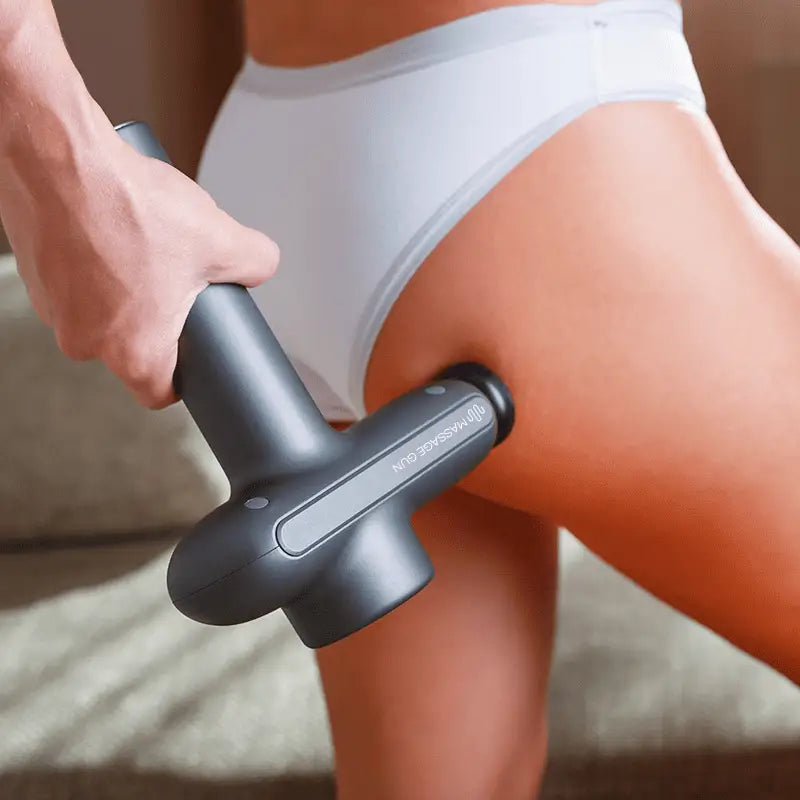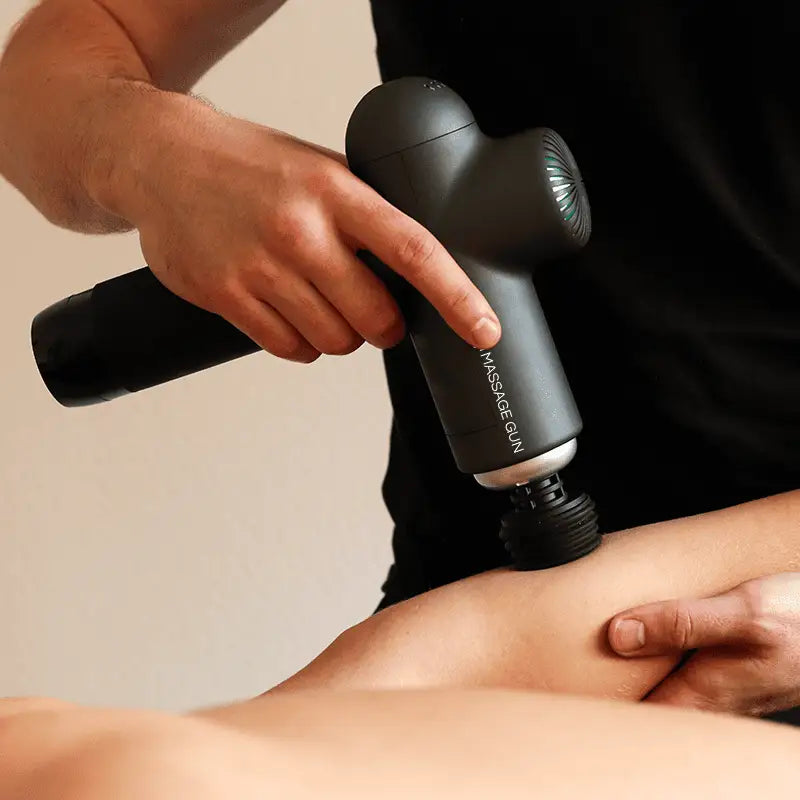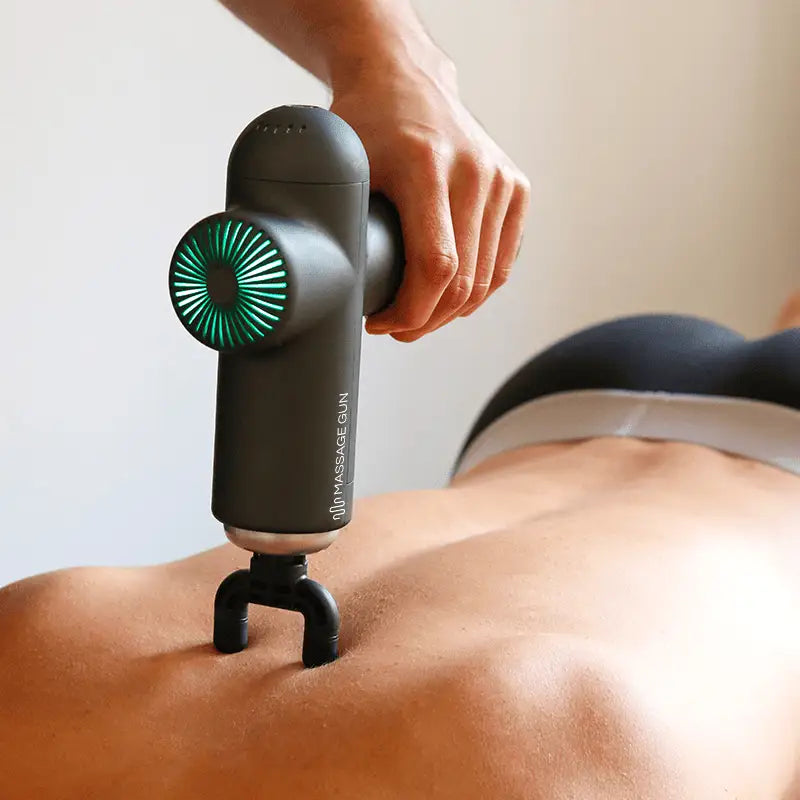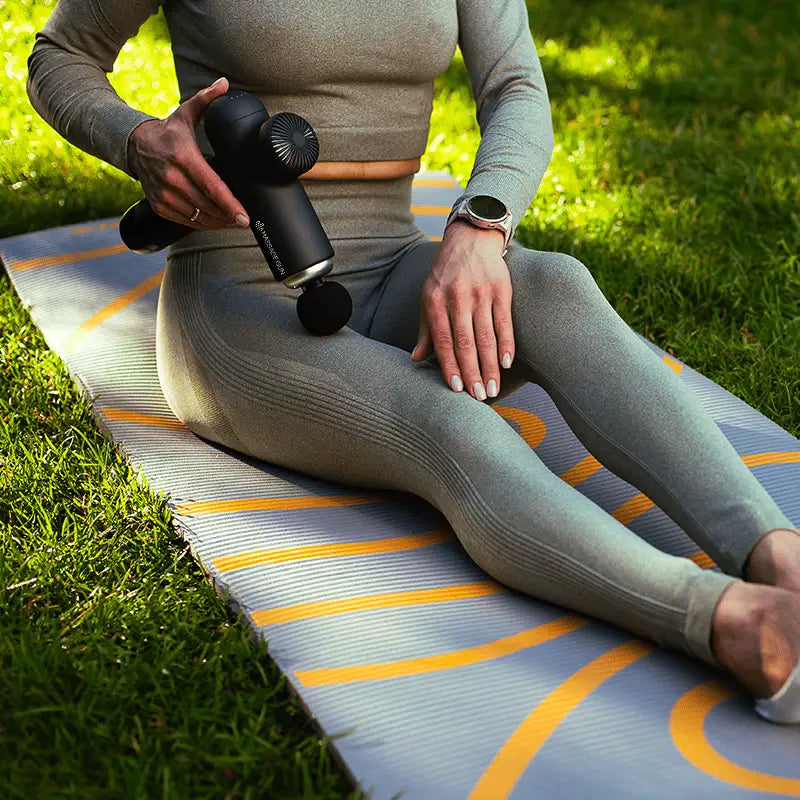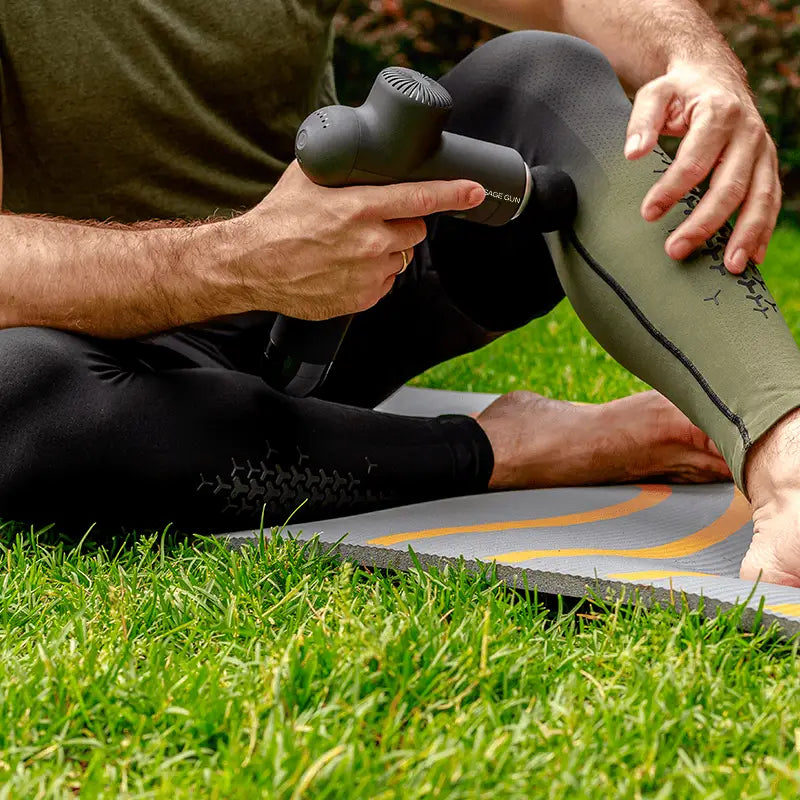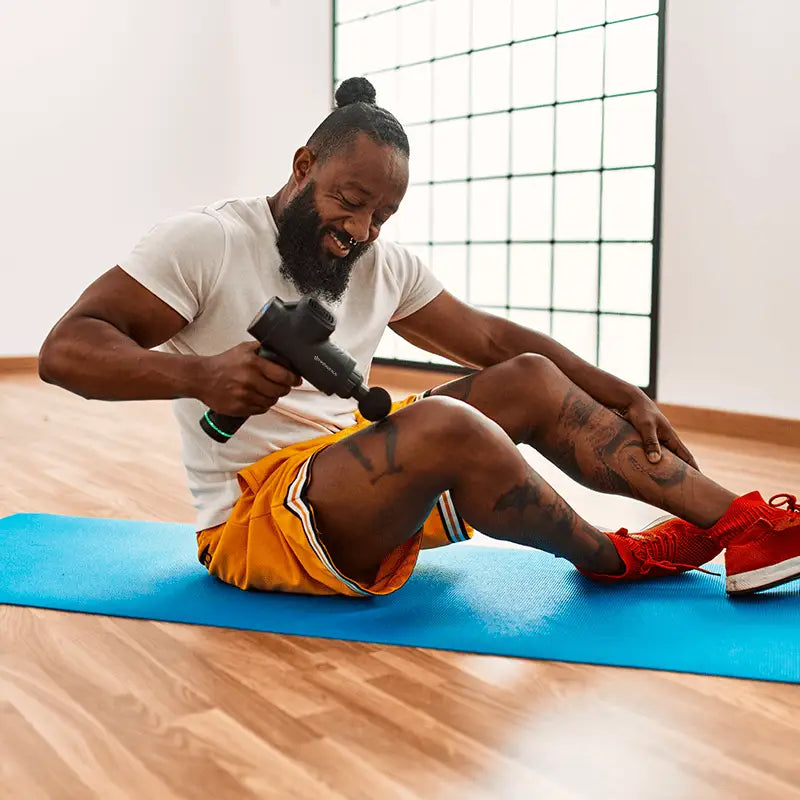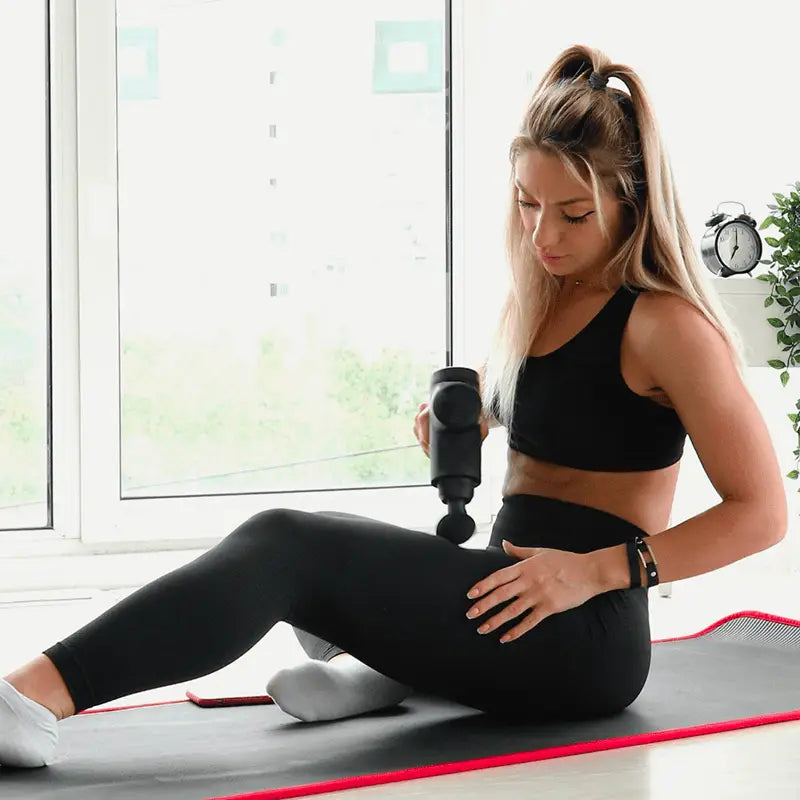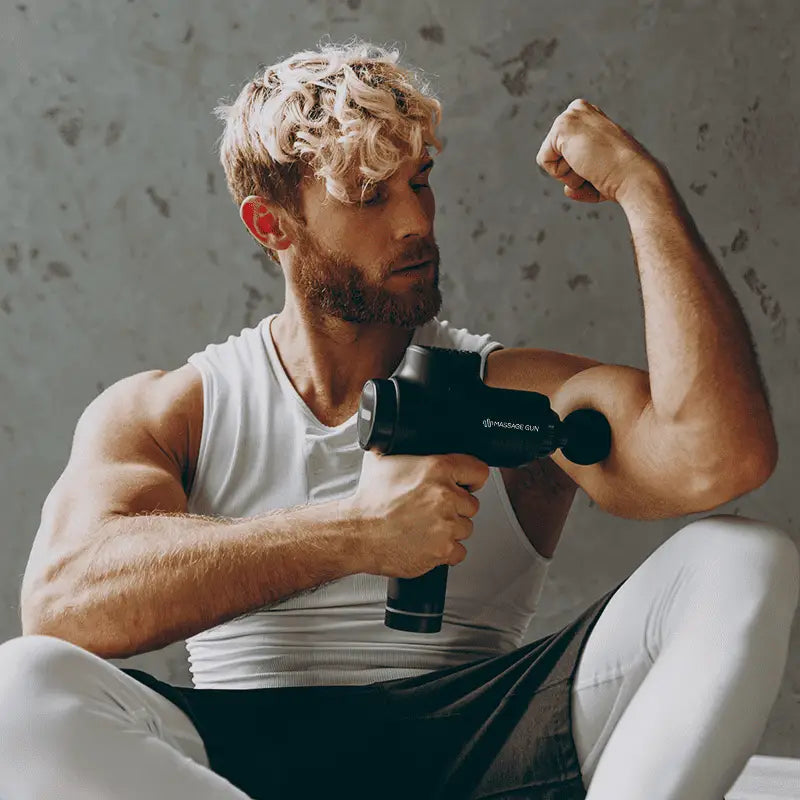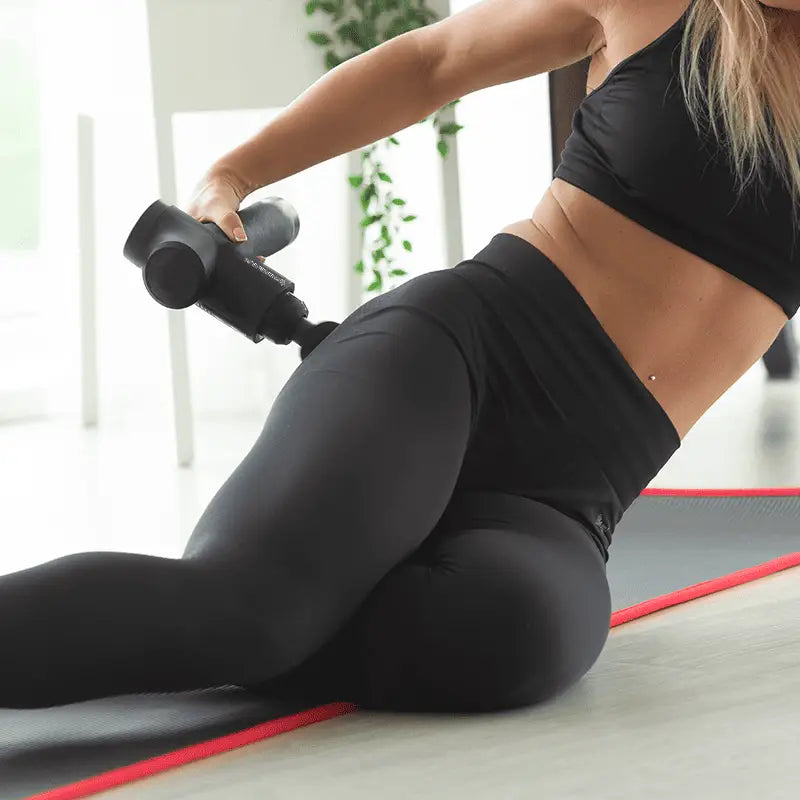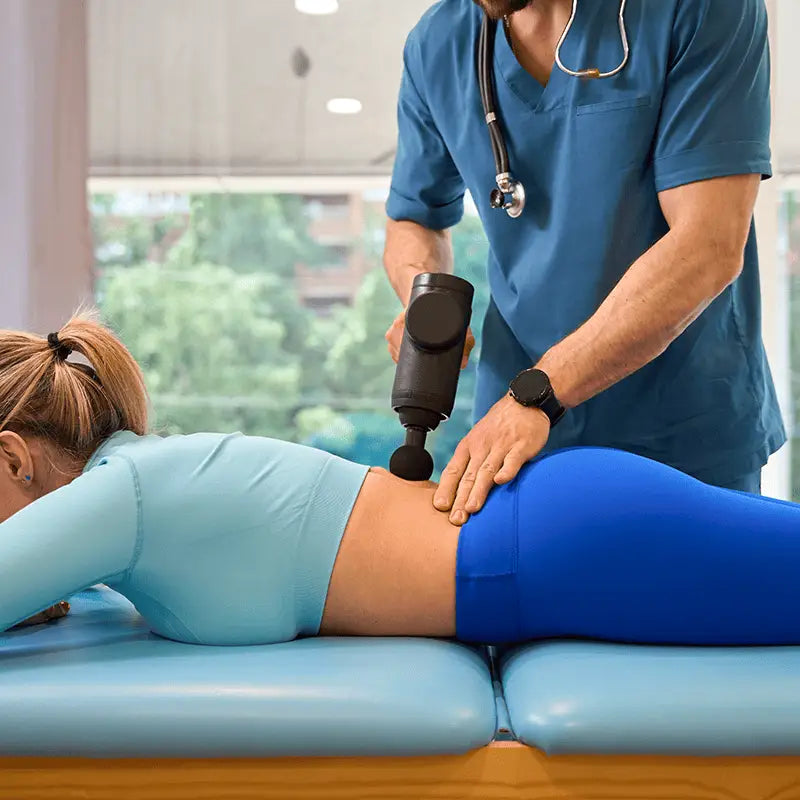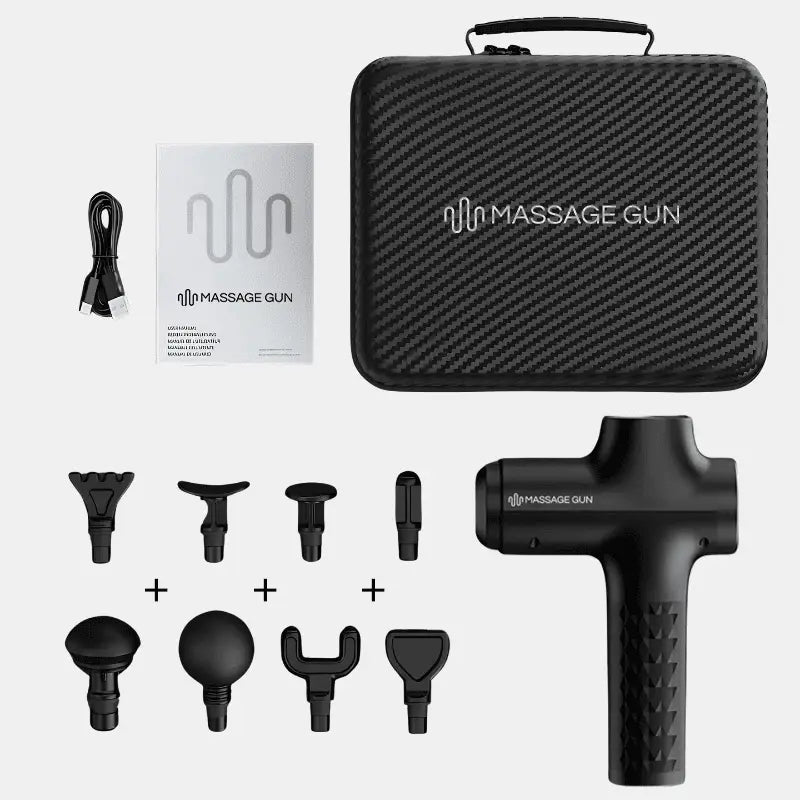Using a handheld massage gun has become increasingly popular among fitness enthusiasts and individuals seeking relief from muscle soreness. These devices are designed to alleviate pain and enhance recovery through percussive massage therapy.
However, one common question arises: can you safely use a massage gun on your neck? This article explores the safety of using a massage gun in this sensitive area, expert recommendations, and alternative methods for neck pain relief.
Is using a massage gun on your neck safe?
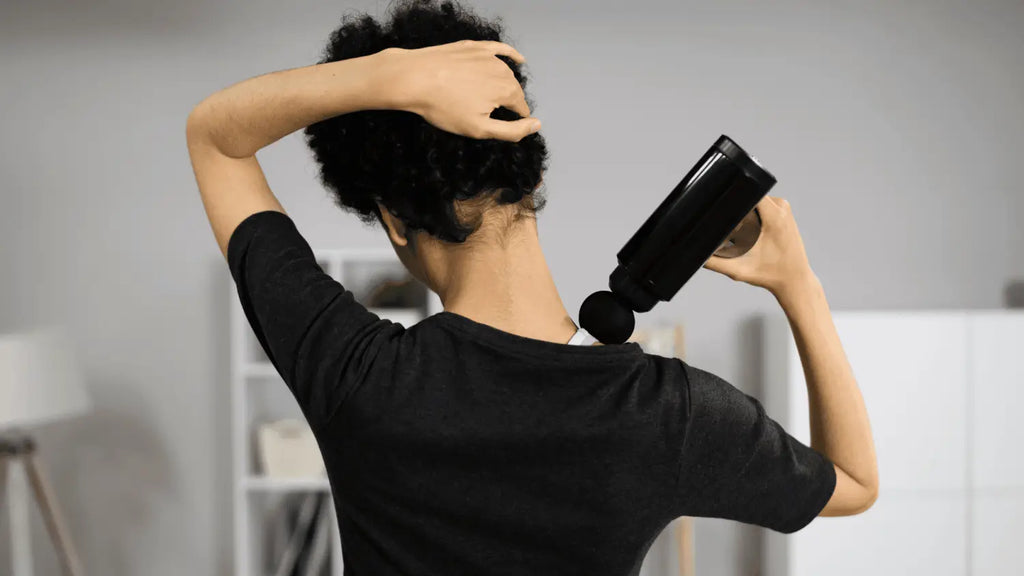
Understanding the risks
When considering using a massage gun on your neck, it's crucial to understand the risks involved. The neck houses vital structures, including arteries and nerves, making it a sensitive area. Direct use of a massage gun can lead to soft tissue damage, nerve injury, or even vascular complications.
Reports indicate that improper application could displace the carotid arteries or cause a vertebral artery dissection, which may result in serious consequences, including stroke symptoms. Medical experts have explained that the pressure and vibrations from a handheld massage gun can be dangerous, particularly when applied incorrectly.
Expert opinions
Healthcare professionals overwhelmingly advise against using massage guns directly on the neck. Board-certified physical therapists, such as Dr. Krzyzanowicz, often emphasize that the neck's anatomy is complex, and the risk of injury outweighs any potential benefits. In many cases, chronic neck pain can be attributed to tension in surrounding areas, such as the shoulders and upper trapezius muscles.
Instead of targeting the neck directly, experts recommend using the massage gun on these safer muscle groups to relieve tension indirectly. Consulting a physician or a licensed massage therapist can provide tailored medical advice regarding safe usage.
How to use a massage gun for neck pain relief?
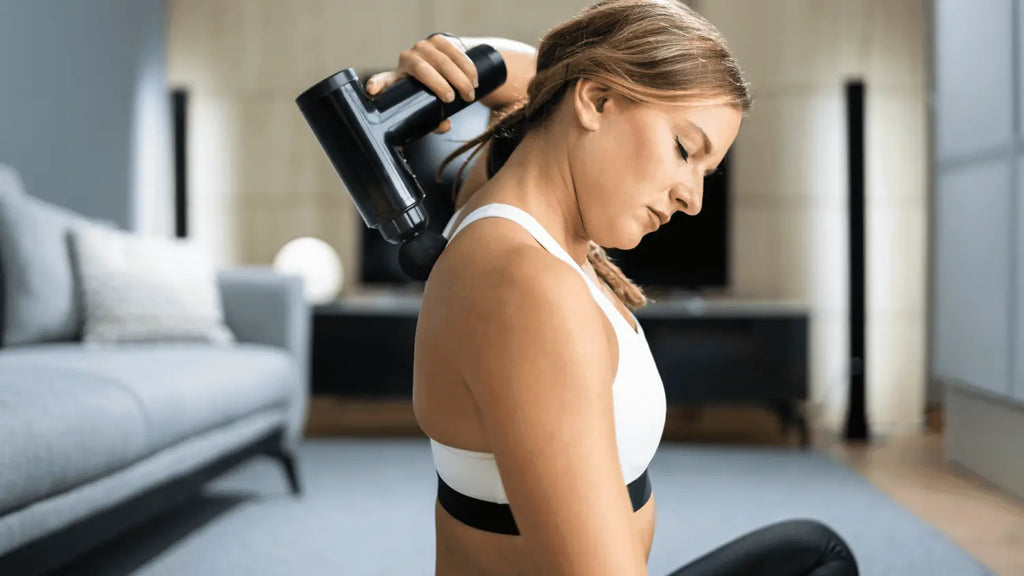
Recommended techniques
If you're experiencing neck pain and are considering using a massage gun, there are safer techniques to follow. Instead of applying the device directly to the neck, focus on the upper back and shoulders, where tightness often originates. Hold the massage gun perpendicular to the muscle group and use a gentle speed setting to apply the gun correctly.
Begin with a lower intensity and gradually increase as needed, ensuring you remain comfortable throughout the process. Limiting the duration to avoid overstimulation is essential, focusing on painful areas for no more than one to two minutes at a time. This approach can help boost circulation without causing harm.
Areas to focus on
To safely relieve pain in your neck using a massage gun, concentrate on areas such as the upper trapezius and levator scapulae muscles, located between the neck and shoulders. These muscles can often harbor tension that radiates pain into the neck.
Other effective regions include the rhomboids and upper body. By gently applying the massage gun to these areas, you can temporarily relieve muscle tension and promote relaxation.
Always listen to your body and adjust the intensity to avoid any pain or adverse reactions. Some people find that watching a video demonstrating safe techniques helps them learn the best practices.
Why you should avoid direct use on the neck?
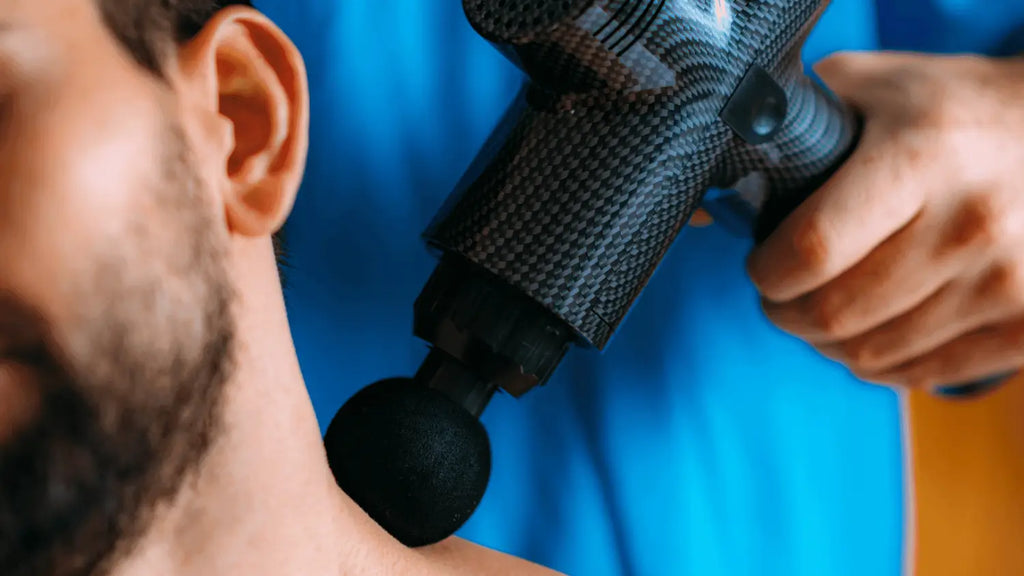
Anatomy of the neck
The neck comprises sensitive structures that connect the skull to the rest of the body. Major arteries, including the carotid arteries, run through this region, supplying blood to the brain. Additionally, the neck contains various nerves that control movement and sensation.
Due to these delicate components, direct application of a massage gun poses significant risks. The vibrations and percussive force can disrupt blood flow and nerve function, leading to potential complications. Chronic neck pain can also be exacerbated by improper techniques, making awareness crucial.
Potential consequences
Using a massage gun on the neck can lead to serious outcomes, including carotid dissection, a condition where a tear forms in the carotid artery. This tear can obstruct blood flow to the brain, leading to stroke symptoms such as dizziness, severe headache, or weakness on one side of the body.
Other possible injuries include muscle strains or damage to soft tissue, which could worsen existing conditions. The International Journal of Sports Medicine has published reviews detailing the potential harmful effects of using massage guns on sensitive areas. Given these risks, it’s advisable to steer clear of direct use of massage guns on the neck entirely.
Alternative methods for neck pain relief
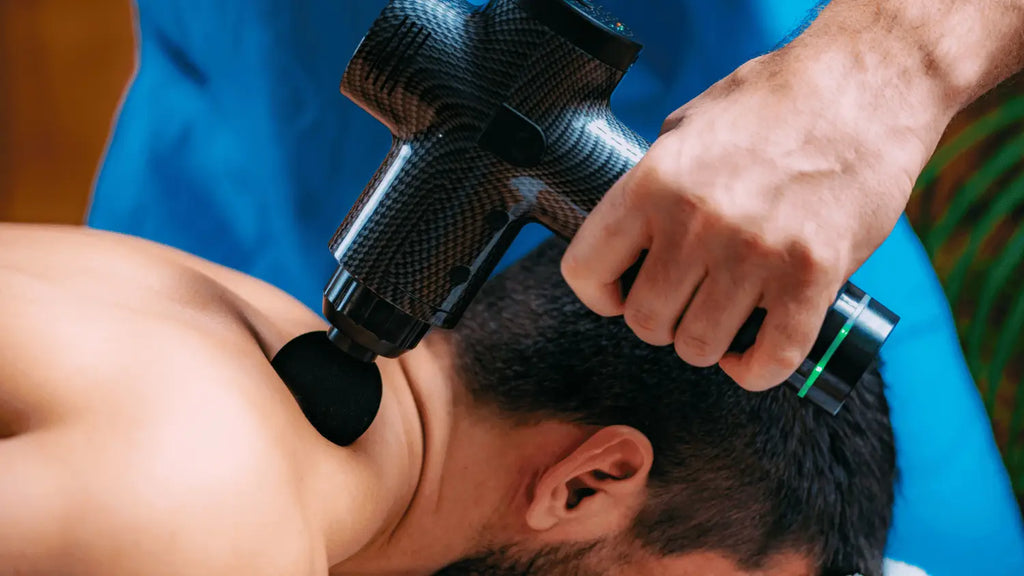
Expert-approved techniques
Fortunately, several effective methods exist for alleviating neck pain without the risks associated with massage guns. Techniques such as gentle stretching, yoga, and heat therapy can provide significant relief. Physical therapists often recommend specific exercises designed to strengthen the neck and shoulder muscles, promoting better posture and reducing tension.
Hinge Health is a program that offers guidance on rehabilitation and exercises to relieve muscle pain in the upper body. Additionally, methods like foam rolling can help release tight muscles in the upper back, indirectly benefiting neck pain without direct pressure on the cervical spine.
When to seek professional help?
If neck pain persists despite self-care efforts, it may be time to consult a healthcare professional. A licensed physical therapist can evaluate your condition and provide personalized recommendations tailored to your specific needs.
They may suggest a combination of manual therapy, exercises, and postural training to address underlying issues. In some cases, imaging studies may be warranted to rule out more serious conditions. By seeking expert advice, you can ensure a safe and effective approach to managing neck pain.
Conclusion

In summary, while massage guns are effective tools for muscle recovery, using them directly on the neck is not advisable due to the potential risks involved. Understanding the anatomy of the neck and following expert recommendations can help you safely alleviate neck pain.
By focusing on surrounding muscle groups and employing alternative methods, you can promote healing without jeopardizing your safety. Always prioritize your health and consult professionals when in doubt about the appropriate treatment for neck pain.
Frequently asked questions
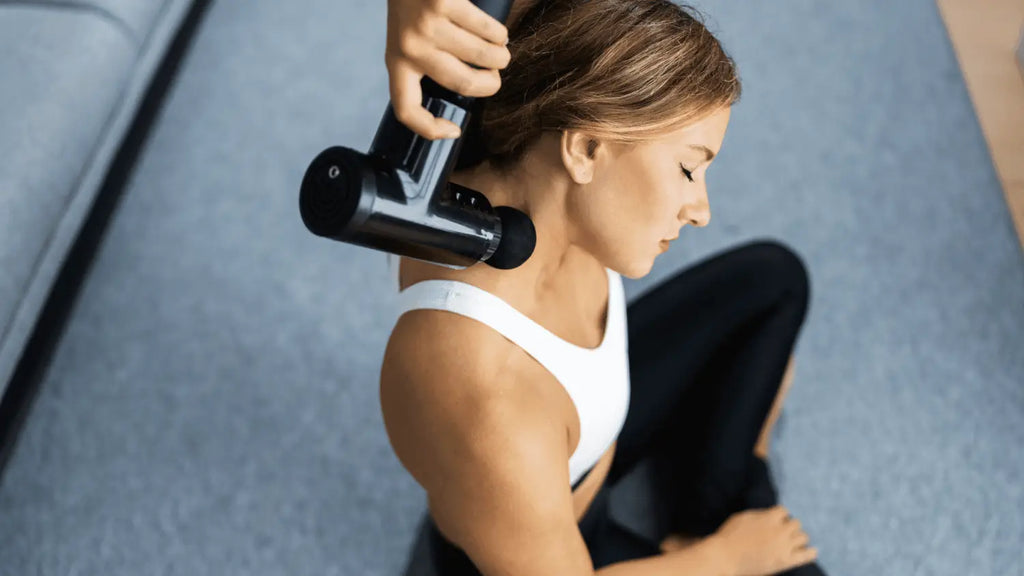
1. Can you safely use a massage gun on your neck?
Using a massage gun on your neck can be risky for your overall health. The neck contains sensitive structures, including arteries and nerves. Directly applying a percussive massage gun may lead to serious complications, such as vascular injury or nerve damage.
Medical professionals, including Dr. Krzyzanowicz, typically advise against using massage guns directly on the neck. Instead, focus on surrounding areas, like the upper back and shoulders, to relieve tension safely. This therapeutic tool can help improve flexibility and range of motion when used correctly on safer muscle groups.
2. What are the risks of using a massage gun on the neck?
The primary risks of using a massage gun on the neck include potential vascular injuries, such as carotid artery dissection, which can be dangerous. This can lead to a stroke, causing symptoms like dizziness or severe headaches. According to a recent journal of sports physical therapy report, the neck's anatomy makes it a high-risk area for direct application.
Improper use can disrupt blood flow to the brain, so it’s crucial to follow safe usage guidelines and consult a healthcare professional if unsure. Many experts, including those from the public health field, strongly recommend avoiding direct neck applications altogether.
3. How can I use a massage gun safely near my neck?
To use a massage gun safely near your neck, focus on the upper back and shoulder muscles instead of the neck itself. Position the device at a perpendicular angle to the muscle group and use a low-speed setting. Keep the application time short no more than one to two minutes on each area and monitor how your body feels.
This technique can help relieve tension and improve circulation in surrounding muscles, which may indirectly relieve neck pain without the risks associated with direct application. Many people on TikTok share tips about safely using a massager; consider checking those out for additional ideas.
4. What are safer alternatives for neck pain relief?
There are several effective alternatives for relieving neck pain without using a massage gun directly on the area. Techniques like gentle stretching, heat therapy, and yoga can be beneficial.
Physical therapy exercises can also strengthen neck muscles and improve posture, helping to treat chronic neck pain effectively. Additionally, using a foam roller on the upper back can indirectly help alleviate neck tension. Always consult a healthcare professional for personalized recommendations based on your specific needs and musculoskeletal condition.
5. Can using a massage gun on the neck cause a stroke?
Yes, using a massage gun directly on the neck can potentially lead to a stroke. The neck contains major arteries, and applying excessive pressure can displace these vessels, leading to conditions such as carotid artery dissection. This can obstruct blood flow to the brain and result in serious complications.
Therefore, it’s critical to avoid using a massage gun on the neck and seek safer methods for pain relief, particularly those that have been validated in the journal of sports physical therapy.
6. What should I do if I accidentally use a massage gun on my neck?
If you accidentally use a massage gun on your neck and experience any unusual symptoms such as dizziness, severe headache, or neck pain seek medical attention immediately. It’s essential to monitor your condition closely, as prompt evaluation can prevent potential complications.
In the future, stick to safer areas, such as the upper back and shoulders, when using a massage gun. Avoid massaging directly on the front or side of the neck, as this can be dangerous. Experts like Sophie Dolce have highlighted the importance of using these devices safely.
7. What areas should I avoid when using a massage gun?
When using a massage gun, avoid applying it to sensitive areas such as the front or side of the neck, over the bones of the cervical spine, and directly on bony structures. Instead, focus on larger muscle groups like the upper back, shoulders, and lower back.
These areas are safer and can help relieve pain and tension that contribute to neck pain. Ensuring you apply the massage gun correctly with the appropriate attachments will help you maximize its benefit while minimizing risks.
8. How often can I use a massage gun on safe areas?
You can safely use a massage gun on appropriate muscle groups, such as the upper back and shoulders, for about 1-2 minutes per area, up to 2-3 times a day. Ensure you listen to your body and adjust the frequency and intensity based on how you feel.
Overuse can lead to soreness, so it's essential to find a balance that promotes recovery without causing further discomfort. Regular use of a percussive massage gun can help relieve muscle tension and boost circulation over the long term.
9. What is the best technique for using a massage gun?
The best technique for using a massage gun involves several key steps. First, choose the appropriate attachment based on the muscle group you're targeting. Start with a lower speed setting and hold the device at a perpendicular angle to the muscle.
Move slowly and apply gentle pressure, focusing on areas of tightness for short intervals. Always ensure you're comfortable and stop if you experience pain. Properly using the massage gun can improve performance and recovery by reducing scar tissue and muscle stiffness.
10. When should I consult a professional about my neck pain?
If you experience persistent neck pain, stiffness, or discomfort that doesn't improve with self-care methods, it's important to consult a healthcare professional. A physical therapist or physician can provide an accurate diagnosis and recommend tailored treatment options.
Early intervention can help prevent more serious issues and improve your overall neck health. Remember that chronic neck pain can stem from various underlying conditions, so a comprehensive evaluation by a care team is vital for effective treatment.


